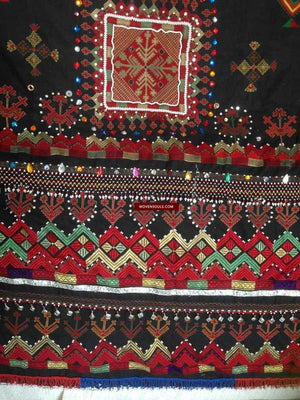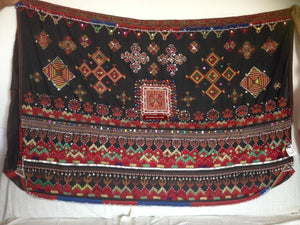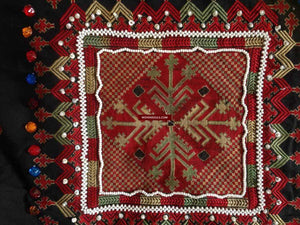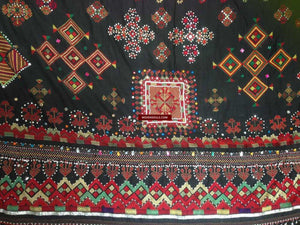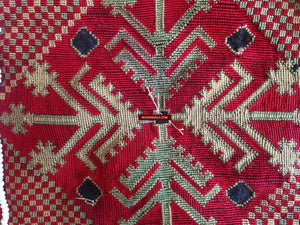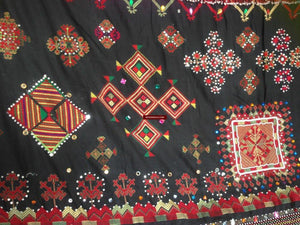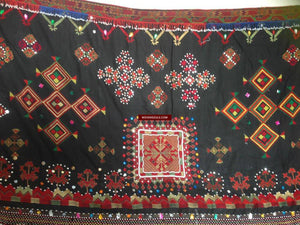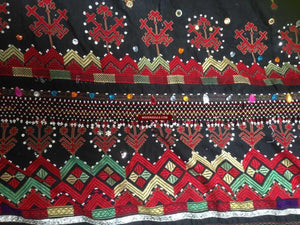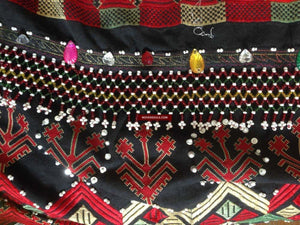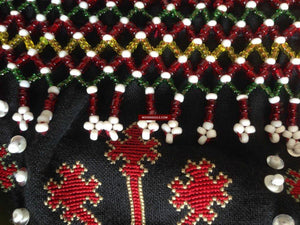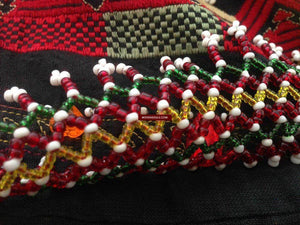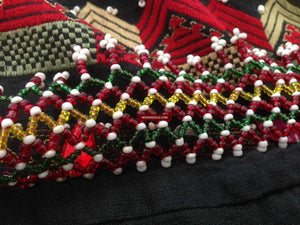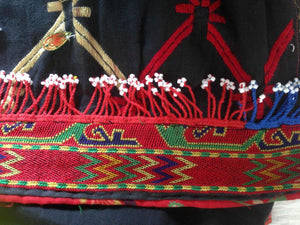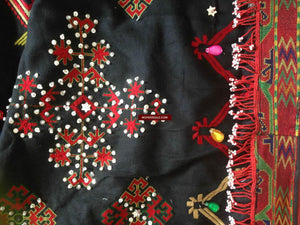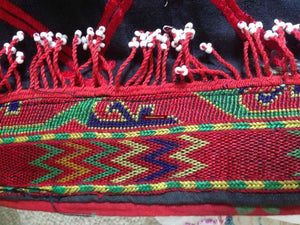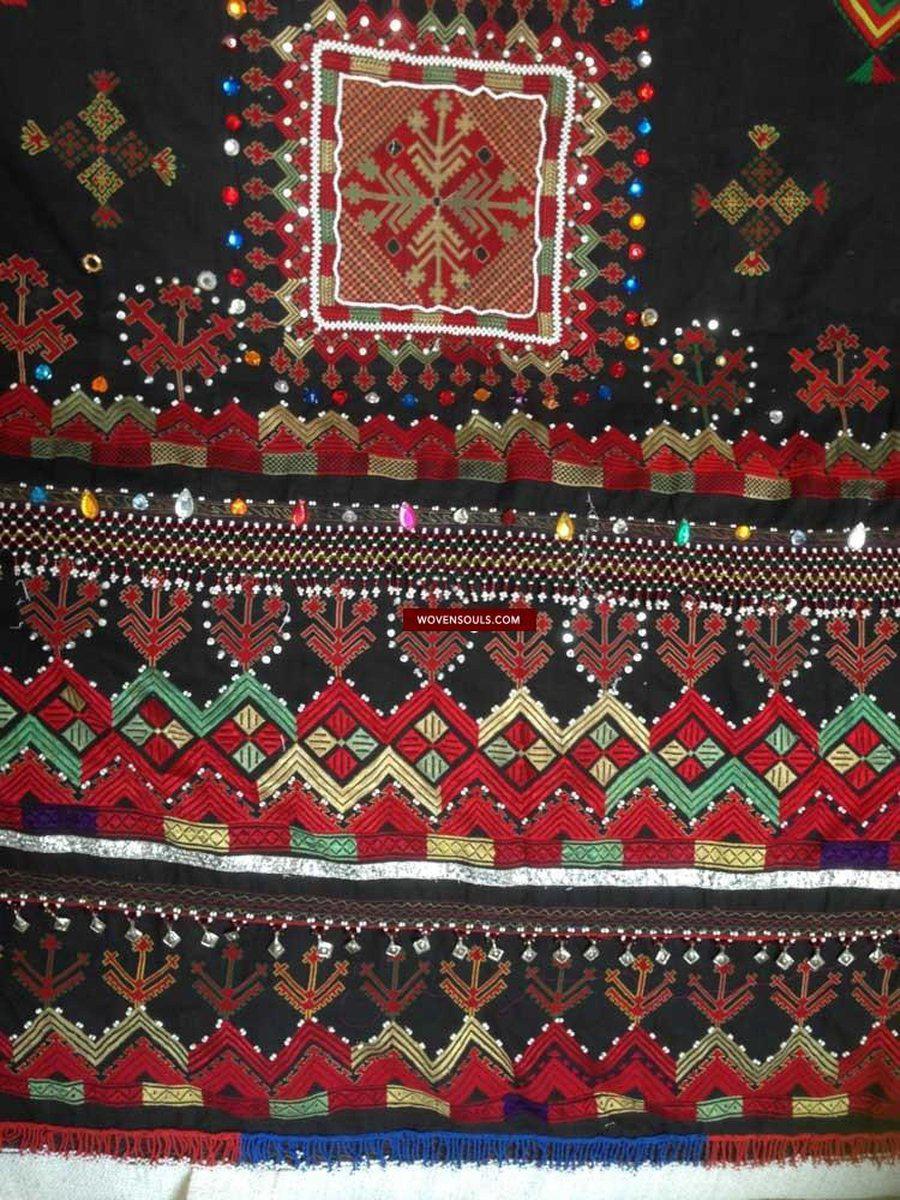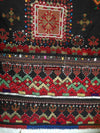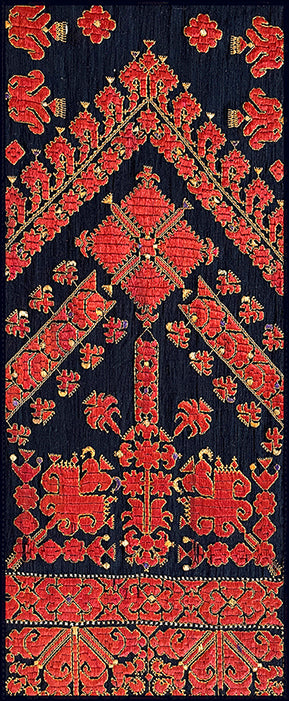Your Cart is Empty
589 Heavy Abbasi Kohistan Superfine Embroidery Wedding Shawl Textile
Double Layered Shawl from Kohistan
The central medallion and the minor floral motifs appear to be from the early 1900s while the brighter elements and lower panel are estimated to be from the 1960s or 70s.
The work may have been started earlier and finished half way, then discontinued and then begun again by a granddaughter or grand-daughter-in-law.
The central medallion is very remarkable:the embroidery stitches are so fine that the colored thread wraps around a warp / weft of the black base. This type of work - called Kolai work - is the finest work seen in embroidery.
Further, the precision with which these stitches have been rendered in this medallion are outstanding as the base is completely covered up and we are unable to see the color of the background material altogether. This is rare even within the category of Kolai work.
This is not restricted to the central medallion alone but also extends to the red flowers and florets all over the piece.
Only the brighter colored motifs rendered in silk thread use a different stitch that is common.
Colored beads have been woven to form pretty fringes that end in little white flowers - again a very remarkable feature that is a characteristic of the beadwork of Kohistan.
The two layers are joined at the top and at the corners of the bottom. The design of this shawl is ideal for trapping air withing the thick textile layers to keep the wearer warm.
Abbasi community, Kohistan
Partially from the early 1900s /Partially from 1970s
Has 4 triangle patches at the corners to attach the layers.
Red and blue tassels made out of thread and beads.
Beaded borders around the medallions
Black backing layer.
193cm x 124cm
***
This item has spent a lifetime being used for the purpose of its creation with the original artist/user. Signs of this life lived heartily may be present on the piece in the form of stains, thread loss, loose threads, holes, tears, color run and other imperfections. Therefore the condition must be assumed to be “not” perfect. More photos of such imperfections will be provided on request.
***
.
Like it? Share it with friends on Facebook!
.......................................................................................................................
















